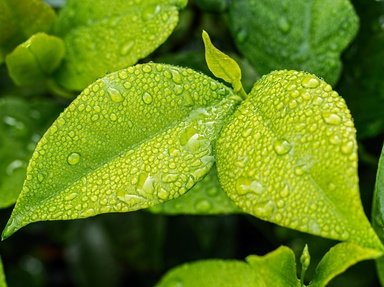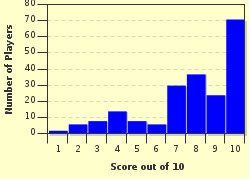Quiz Answer Key and Fun Facts
1. This biennial herb is one of the worst invaders of forested areas in the Midwestern and Eastern United States. In early spring, the plants produce a distinct garlic odor when crushed. The plant typically produces a single stalk topped with white flowers. What is the name of this invasive plant?
2. This plant can quickly dominate wetlands and has caused local extinctions of particular types of waterfowl who will not nest in or around it. The plant occurs throughout the United States, with the exception of Florida, Hawaii, and Alaska. Scientifically named Lythrum salicaria, this plant was introduced to the United States in the early 1800s as an ornamental plant, valued for the flowers that it readily produces. A mature rootstock can weigh over 1 kilogram and produce in upwards of 30 stalks. What is the name of this invasive plant?
3. This invasive plant, which is very common in the South, was introduced to the United States at the Philadelphia Centennial Exposition of 1876. It completely replaces vegetation, and can kill trees by growing over them completely and blocking out all sunlight. What is the name of this invasive plant that has been referred to as "the plant that ate the south?"
4. This plant was introduced to the United States as a garden plant in the 1700s. It reproduces to produce dense, impenetrable thickets in many areas in the Eastern United States, and has been declared a noxious weed in Illinois, Iowa, Kansas, Missouri, Maryland, Ohio, Pennsylvania, Virginia, Wisconsin and West Virginia. Costs to farmers to control this plant in 1980 in West Virginia alone exceeded 40 million dollars. What is the name of this plant that produces large clusters of white to pink flowers in the spring?
5. These plants root themselves in lake bottoms and grow rapidly to form thick canopies. Millions of dollars are spent annually to control this plant, which negatively affects fish populations and makes recreational water usage difficult or impossible. In many cases, boats can worsen the spread of this plant because when a piece of the plant is broken off with a propeller, it can grow a whole new plant. What is the name of this invasive plant?
6. This plant is poisonous to humans and can trigger dermatitis, a skin rash, in sensitive individuals. It can climb along other plants and structures to heights of over 90 feet and spreads horizontally to form dense ground cover. What is the name of this invasive plant that was introduced in colonial times and is still widely planted as an ornamental?
7. This plant has covered over one million hectares since being introduced to the United States over 200 years ago. The plant produces a milky sap that can cause contact dermatitis in both humans and cattle, and if eaten in large quantities, causes death in cattle. Economic losses related to cattle farming, were estimated in 1994 to approach 120 million annually for the Dakotas, Montana, and Wyoming. What is the name of this plant, which greatly reduces the quality and productivity of foraging grounds?
8. This plant has a strong odor, which some people think smells like cashews or peanuts. It grows rapidly, forming thick stands, and colonizes by root sprouts and seeds spread by both wind and water. A plant only needs to be 2 or 3 years old to produce viable seed. What is the name of this plant, that was introduced in 1784 from Europe, and is originally from Eastern China?
9. All of the following are characteristics of invasive plants except:
10. Are invasive plants the same as exotic plants?
Source: Author
Janelle205
This quiz was reviewed by FunTrivia editor
crisw before going online.
Any errors found in FunTrivia content are routinely corrected through our feedback system.

